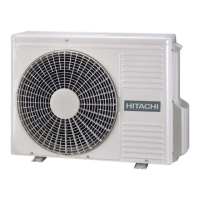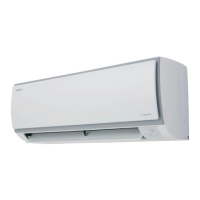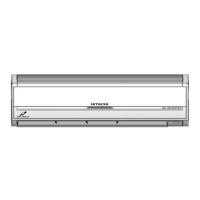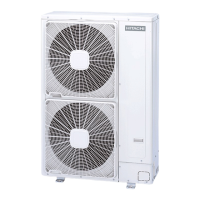PMML0205A rev.4 - 11/2012
32
12.3. COMMON WIRING
CAUTION:
All the eld wiring and electrical components must comply with
local codes.
12.3.1. ELECTRICAL WIRING BETWEEN INDOOR UNIT
AND OUTDOOR UNIT
− Connect the electrical wires between the indoor unit and the
outdoor unit, as shown below.
− Follow local codes and regulations when performing electrical
wiring.
− Use twist pair wire (more than 0.75 mm²) for operation wiring
between outdoor unit and indoor unit, and operation wiring
between indoor unit and indoor unit.
− Use 2-core wire for the operating line (Do not use wire with
more than 3 cores).
− Use shielded wires for intermediate wiring to protect the units
from noise obstacle at length of less than 300 m and size
complied with local code.
− Open a hole near the connection hole of power source wiring
when multiple outdoor units are connected from one power
source line.
− The recommended breaker sizes are shown in Table of
electrical data and recommended Wiring, Breaker Size/1 O.U.
− In the case that a conduit tube for eld-wiring is not used, x
rubber bushes with adhesive on the panel.
− All the eld wiring and equipment must comply with local and
international codes.
ATTENTION:
Pay attention to the connection of the operating line. Incorrect
connection may cause the failure of PCB.
Operating Line
(Twisted shielded pair cable or
shielded pair cable)
DC5V (Non-Pole Transmission,
H-LINK system)
Operating Line
(Twisted shielded pair cable or shielded pair cable)
DC5V (Non-Pole Transmission, H-LINK system)
TB
:
Terminal Board
CB
:
Circuit Breaker
ELB
:
Earthleakage Breaker
:
Internal Wiring
:
Field Wiring
:
Field-Supplied
1,2
:
Outdoor-Indoor connection
ATTENTION:
The power supply must be connected to the outdoor unit and
indoor unit separately.
ELECTRICAL WIRING
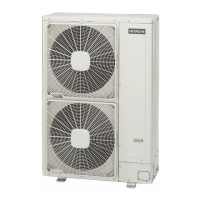
